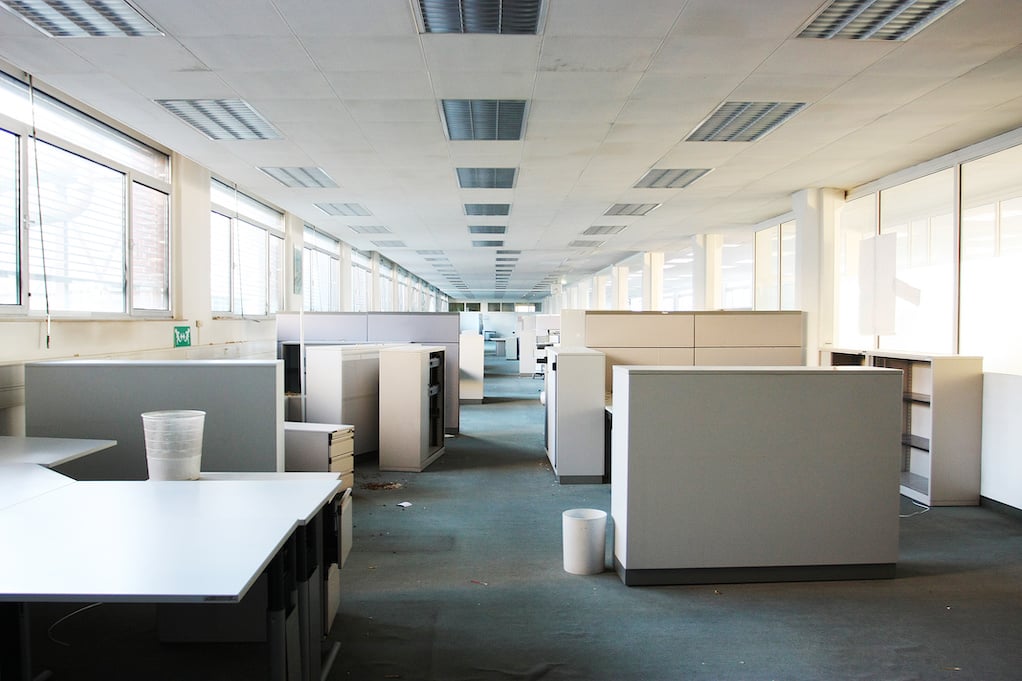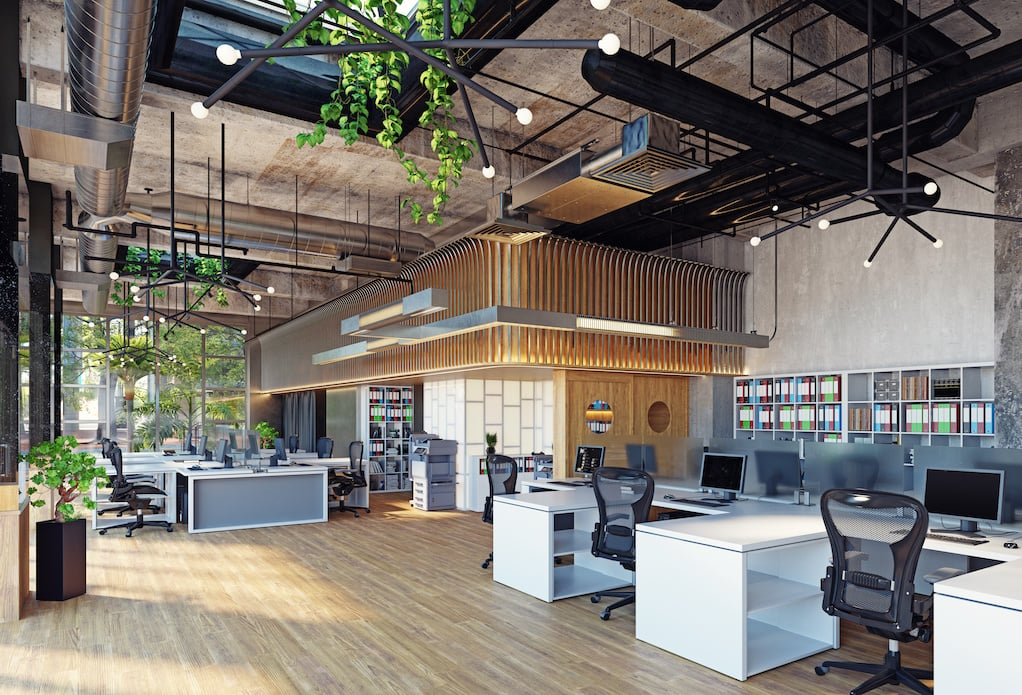In this article, you'll learn:
- The "flight to quality" trend's impact on demand for premium office spaces.
- How falling property values and rising vacancies affect urban real estate markets.
- Biden Administration's potential solutions for converting empty offices to housing.
- Regional economic shifts driven by changes in office market dynamics.
The "flight to quality" phenomenon is dramatically altering the landscape of the office market.
As corporate tenants continue to seek safer, higher-value assets amidst economic uncertainty and stock market volatility, interest in premium offices and other quality investments is surging. This trend has significant implications on rental prices, leasing trends, and widespread corporate decisions.
It marks a quality over quantity approach when it comes to a portfolio. And in the office sector, the trend offers both challenges and opportunities, making it essential for tenants to carefully consider their strategies in this evolving market. The emphasis on high-quality buildings reflects a broader societal shift towards better work environments, making prime offices a critical component of future business success.
The flight to quality is symptomatic of a post office apocalyptic market where tenants need to adapt to stay alive. Navigating the market with the right intel can turn a leasing nightmare into a once-in-a-lifetime, good deal. So get the right intel today. Download your free copy below.
The Flight to Quality in Commercial Real Estate
Although the COVID pandemic is over, it gave us several key trends which have stuck around. From hybrid schedules with office-optional workplace environments to the drop in property values, the combination of these conditions, unintentionally allowed for another trend to emerge: the flight to quality.
A steep and rapid drop in new office leases caused many landlords to lose big on their ROI's. And with the pressure of (X) of old leases coming due in 202(X), they largely sweetened their concession packages to make new leases a better value for any new tenants. So, with an overabundance of empty offices to choose from and a bevy of landlords willing to negotiate, tenants overwhelmingly migrated to the top-tier of properties newly available for a lower price.
Simultaneously, with the option to WFH, expectations for in-workplace amenities soared. Employees who did make trips to the office felt the experience should offer additional value they could not receive working from home. And thus, the flight to quality was born as companies prioritized high-quality offices to attract and retain top talent.
Different Interests in Property Types
This shift to the flight to quality is particularly notable when looking at the tenant demand for Class A properties, which offer modern amenities, superior design, and prime locations. In contrast, Class C buildings, which often lack these features, are experiencing higher vacancy rates and a loop of further declining values.
For instance, a GlobeSt analysis of 57 U.S. cities found that higher-class offices receive 84% more rental income and have significantly lower vacancy rates compared to the broader market.
|
"Rent premium for prime office space increased to 84% during the first quarter and vacancy rates were 14.8%, 4.5 percentage points lower than the rest of the market, a gap that has widened from 1.9 percentage points in mid-2018." -GlobeSt |
These prime buildings, representing just 2% of U.S. offices, feature quality designs, wellness standards, and are situated in walkable neighborhoods near retail and transit hubs. This emphasis on quality means companies are willing to pay a premium for spaces that enhance employee satisfaction and productivity.
Risk Management Through the Following the Flight to Quality
With the market still recalibrating to a post-pandemic Office Apocalypse, 1 in 3 commercial landlords are at risk of default. Tenants have heeded this warning sound and are even refusing to negotiate with landlords until they prove they have the finances to support a long-term lease. And overwhelmingly, property owners who are struggling the most are the ones saddled with older, outdated offices.

As a result, tenants are continuing to move away from riskier landlords and other volatile assets, in favor of more stable properties. High-quality assets offer less risk of having to make out-of-pocket maintenance costs because of their stable income streams. (The other way to prevent this in an original lease is by including self-help clauses for the tenant.)
This is just another attractive quality compared to already-devalued alternatives.
Additionally, the flight to quality extends beyond high quality real estate amenities, it also represents geographical shifts.
This trend is especially evident in the migration to regions with a lower cost of living and a business-friendly economy, such as Florida and the Sunbelt. This shift allows companies to provide higher quality amenities for less capital, enhancing their overall value proposition.
For instance, Florida has become a prime location for companies seeking to optimize their expenditures while providing a superior quality of life for their employees. Offer favorable tax policies, fewer regulatory hurdles, and robust support for businesses. Read: Florida Dominates the 5 Hottest Job Markets.
Long-term leases in higher cost areas like NYC and San Francisco are proving to be riskier investments for tenants considering where the optimal location is.
The migration of skilled workers to markets with a lower cost of living further strengthens the local economies and feeds a widespread flight to quality.
Economic and Monetary Policy Implications from Flight to Quality
The flight to quality is closely tied to broader economic and monetary policy trends. The banks' monetary policies and high interest rates have made financing premium properties more accessible.
This has fueled demand for Class A and trophy properties, driving up prices while making it harder for less desirable properties to compete.
Rising inflation and falling purchasing power are also influencing corporate decisions. As inflation erodes the value of cash and risky assets, investors seek safer, inflation-hedged investments. High-quality commercial real estate fits this bill, providing potential for value appreciation.
|
"Continued demand for prime space and a shrinking construction pipeline mean prime rents will continue to rise and command a premium over non-prime space, according to an analysis of office markets in 57 U.S. cities" -GlobeSt |
This disparity in financing has resulted in a construction boom for premium office spaces, while development for lower-tier properties has ground to a halt. Developers and investors are focusing their efforts on high-quality buildings that promise better returns and stability, leaving older and less attractive properties behind.
Strategic Considerations for Investors and Businesses
By focusing on properties that offer stability and long-term growth potential, tenants can manage risk of a landlord's default more effectively. This strategy is particularly important in periods of economic uncertainty, where the stability of high-quality assets provides a buffer against market volatility.
Corporations can benefit from investing in leases with premium spaces to enhance their brand image, attract top talent, and improve operational efficiency. These assets provide numerous advantages, including better employee retention and satisfaction. Investing in quality spaces also aligns with broader trends in corporate responsibility and sustainability, as many prime properties incorporate eco-friendly features and technologies.
Takeaways for Tenants
The flight to quality is reshaping the market, emphasizing the importance of high-quality assets in a volatile economic environment.
As companies and investors continue to prioritize quality over quantity, the demand for premium offices continues to rise, driving up prices and pushing older, less desirable properties to the periphery.
This trend offers both challenges and opportunities, making it essential for tenants to carefully consider their strategies in this evolving market. The emphasis on high-quality buildings in the flight to quality reflects a broader societal shift towards better work environments, making prime offices a critical component of future business success.

Furthermore, the flight to quality extends beyond national borders, with similar trends observed in other countries. Investors globally are shifting away from riskier investments, seeking stable, high-quality assets that promise long-term value appreciation. This is especially relevant in volatile markets, where high-quality properties can provide a safer haven amidst economic fluctuations.
Buyers and investors are willing to pay a premium for these assets, recognizing their potential for stable income and capital growth. Banks are more likely to finance these investments, understanding the reduced risk and higher demand associated with high-quality properties.
As markets continue to evolve, the emphasis on high-quality buildings will likely persist, driven by the need for stability.
When it comes to your portfolio, it's time to consider the age of the buildings you have leases with. Older properties have a higher likelihood of a challenged landlord. And when a landlord default brings a whole host of issues to a tenant's portfolio, it's not something to take lightly.
Learn how to protect your portfolio in a post-pandemic market driven by a flight to quality.








